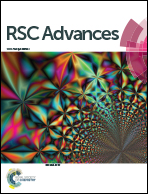Critical biodegradation process of a widely used surfactant in the water environment: dodecyl benzene sulfonate (DBS)†
Abstract
Sodium dodecyl benzene sulfonate (DBS) is a widely used surfactant that is now found extensively in water bodies because of anthropogenic emissions. Since the degradation of DBS in the environment mainly relies on microorganisms, it is essential to study the mechanism by which DBS is biodegraded. In this study, Chlorella vulgaris was used to research the biodegradation process of DBS. The C. vulgaris suspension was centrifuged to remove the supernatant, then secondary deionized water and DBS were added to the C. vulgaris. And the intermediate products were detected in real time by electrospray ionization mass spectrometry (ESI-MS). Some novel intermediate products, including 4-sodium sulfophenyldodecanoate acid and its homologs, were detected that had not been mentioned in previous studies. In this work, the process of DBS degradation was indicated, which consisted of three main steps: chain-shorting oxidation, ring-opening oxidation of benzene rings, and degradation of small molecules. By investigating the process of DBS degradation by C. vulgaris, we were able to propose a preliminary mechanism of DBS biodegradation, which is of great significance for research on the migration and conversion of surfactants in the environment.



 Please wait while we load your content...
Please wait while we load your content...